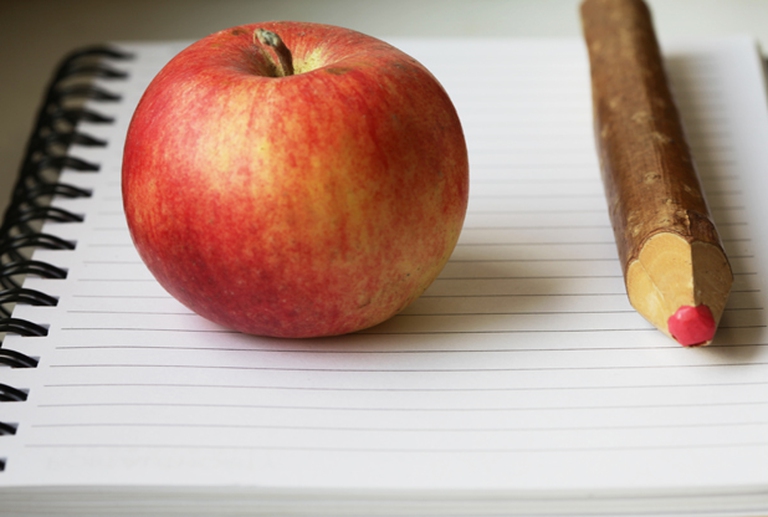
Factory farming conditions and antibiotic-resistant pathogens emerging as a result of them pose an existential threat to humans in the form of zoonotic diseases. Why it’s time to produce and consume food more thoughtfully.
Thanks to I Feel Food, the project on sustainable eating, and the knowhow of Zero Impact®, LifeGate developed a sustainability indicator that classifies each recipe depending on its environmental impact. Sustainability level can be easily identified thanks to the presence of small planet-shaped symbols (from 0 to 5): the more planets the recipe receives
Thanks to I Feel Food, the project on sustainable eating, and the knowhow of Zero Impact®, LifeGate developed a sustainability indicator that classifies each recipe depending on its environmental impact.
Sustainability level can be easily identified thanks to the presence of small planet-shaped symbols (from 0 to 5): the more planets the recipe receives the more sustainable it is. The presence of 5 planets indicates the highest sustainability, while the absence of planets indicates a significant environmental impact.
The indicator summarizes a complex analysis based on the LCA (Life-Cycle Assessment) method, which is internationally regulated by the ISO 14040 standard and it is widely respected in the scientific world. The study considers all stages of products’ supply chain, from cultivation to transportation and distribution. It is based on the carbon footprint, i.e. greenhouse gas emissions, determined by 2 factors: the effective quantity emitted and its impact, measured in terms of global warming potential. Emissions are converted in CO2 equivalent values, through parameters defined by the IPCC (Intergovernmental Panel on Climate Change), scientific body under the auspices of the United Nations. Every recipe is associated to environmental impact values (per gram) that have to be multiplied by recipes’ specific quantities. As result, the receipt evaluation is given by the sum of each single element’s impact.

We chose to express the indicator in a clear way. We aim to inform people about recipes’ sustainability rate, and raise awareness about food’s environmental impact. For these reasons food waste has to be combated.
Recipes’ environmental evaluation algorithms have been developed and used by LifeGate, in occasion of Expo Milano 2015, through 2 important projects: Expo World Recipes and Cucina la Salute con Gusto.
Legend
Outstanding (5 planets)
Excellent (4 planets)
Good (3 planets)
Pass (2 planets)
Insufficient (1 planet)
Siamo anche su WhatsApp. Segui il canale ufficiale LifeGate per restare aggiornata, aggiornato sulle ultime notizie e sulle nostre attività.
![]()
Quest'opera è distribuita con Licenza Creative Commons Attribuzione - Non commerciale - Non opere derivate 4.0 Internazionale.
Factory farming conditions and antibiotic-resistant pathogens emerging as a result of them pose an existential threat to humans in the form of zoonotic diseases. Why it’s time to produce and consume food more thoughtfully.
The world of cinema recognises the link between food choices and the climate crisis by offering vegan menus for awards season events, including at the most important of them all: the Oscars.
Let’s look at the reasons behind the growth of veganism in India, as a small yet vocal section of the population turns towards this diet and lifestyle in the largest milk producing country in the world.
by Jeffrey Y. Campbell, Manager of the Forest and Farm Facility at FAO In the Ecuadorian Amazon, Kichwa farmers grow dozens of products on tiny parcels of land. Their lands hum with biodiversity, yielding nutritious foods that have sustained families for generations. Wandering among fruit and nut trees and crops, these indigenous agroforesters fill their baskets
Mint has many health benefits, but in food it’s often accompanied by artificial green colourings. Instead, Galatea has created a green mint ice cream in a completely natural way.
We’re talking about Galatea, a company that produces semi-finished products for artisanal ice creams using high quality ingredients, natural colouring, excluding thickeners and hydrogenated fats, respecting the environment and supporting the less fortunate.
The mad rush to fake food, like fake meat made with genetically-modified soy, ignores the importance of the diversity of our foods and culinary cultures. It’s a recipe to accelerate the destruction of the Planet and our health.
Like with all foods, the quality of an ice cream can be discerned by reading its label. An expert explains how to do this, and tells us how their company steers clear of chemicals, using only natural ingredients to produce an excellent and “free” ice cream.
Quality ingredients, no artificial colouring and hydrogenated fats. These are the main features of a great ice cream. But what makes an ice cream parlour “good”, i.e. sustainable?







